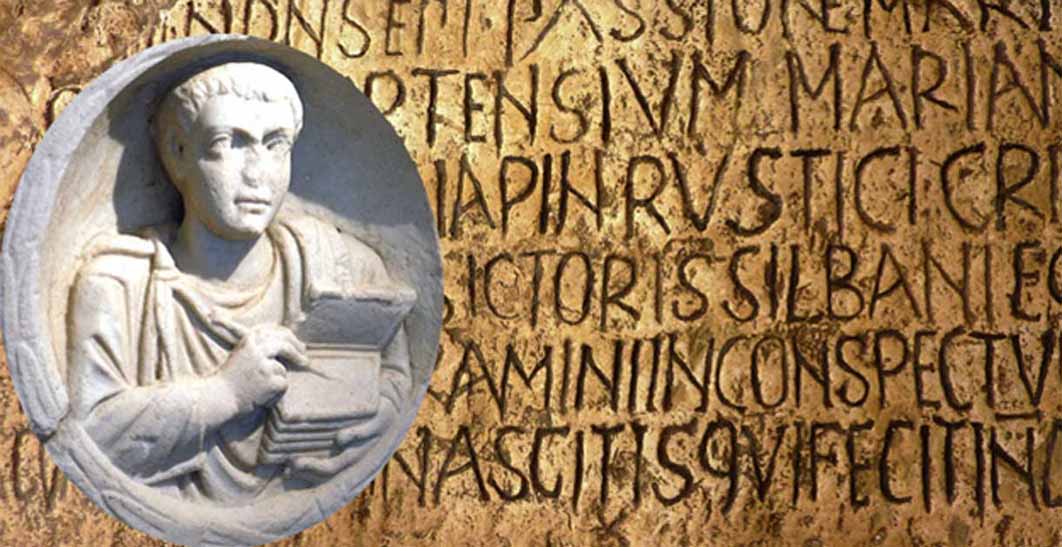
Ecce Homo - The Julius Caesar Murder Mystery
Julius Caesar’s assassination is the best-documented account of any murder committed in the ancient world, and the Ides of March, the day of his murder, is the only day in Roman antiquity that can be re-constructed on an almost hour-by-hour basis. There are seven surviving narrative accounts of varying length, all demonstrating a strong family resemblance. Most are peppered with details that are intended to heighten the sense of drama, including reports of multiple omens. Some, too, manifest a high degree of literary artifice. How much of the reports are actually true?
As far as is known, there was no mechanism for any public inquiry into the crime. Witnesses were not deposed to provide evidence and the senate did not bring any charges against the perpetrators. In the absence of any official account of Caesar’s assassination, the first question to ask therefore, is: Who supplied the evidence upon which the surviving narratives are based?

Relief from a scribe's tomb found in Flavia Solva. (Public Domain) Background: Latin stone inscription. (Public Domain)
News Reports on Caesar’s Death
It goes without saying that everyone who attended the senate on the morning of the Ides of March 44 BC must have reported some version of the murder, if only to their immediate family and friends. However, only those within sight of the victim, principally the assassins, would have been able to supply a reliable and detailed report. Within hours, accounts based on these oral reports began to circulate, disseminated both by those who were horrified by the crime and by those who condoned it. The murder may also have made it into a special edition of the acta diurna, the Roman equivalent of a daily newspaper, which was displayed on a message board in public places throughout the city.
The testimonies hostile to the victim would have justified Caesar’s assassination by claiming that he had initiated a bloody civil war, was bent on destroying the Republic and replacing it with a regnum or monarchy under his rule, and, further, that he had coveted despotism from the beginning of his career. By contrast, those favorable to the victim would have denounced his murder by arguing that Caesar had no designs on the kingship, by characterizing his death as an unmitigated tragedy, and by enumerating all his brilliant achievements, both military and administrative.

The famed Ides of March coin: One side features a portrait of Brutus, and the other side two daggers, (Numismatica Ars Classica)
The earliest surviving account of the murder is that of Nicolaus of Damascus, who was just 19 at the time. Nicolaus included it in his biography of the Emperor Augustus entitled Life of Caesar, which he probably wrote shortly after Augustus’ death in 14 AD. Velleius Paterculus (19 BC – 31 AD), the much-despised author of a Compendium of Roman History, gives an abbreviated and superficial account. Two biographies of Plutarch (46 – after 119 AD), his Julius Caesar and Brutus, offer the most detailed accounts. The Deified Julius of Suetonius (69 – 112 AD) provides evidence of a different and independent tradition. Appian (95-165 AD) begins his description at the moment when Caesar arrived at the senate. Cassius Dio (164-229 AD), focuses upon the actions of the assassins. The most important loss is the Civil War of Caius Asinius Pollio (75 BC – 4 AD), from which Plutarch, Suetonius, Appian and Cassius Dio probably all drew. Just as Shakespeare was unable to work out who was the principal victim in his play Julius Caesar, so, too, sources are unable to agree as to whether Caesar or the assassins should dominate the narrative.
However, though no eye-witness account has survived, the conspiracy – some 60 perpetrators in all – and its aftermath remained a popular source of controversy, confirmed by the fact that Plutarch, writing over a century and a half later, testifies that the exchange between Caesar and the seer Spurinna on the Ides of March was reported by ‘many’. He also uses the phrase ‘as people say’ three times, first when claiming that Gaius Cassius, a leading assassin, ‘silently’ invoked the spirit of Caesar’s enemy Pompey before stabbing the victim, second when relating that Caesar pulled his toga over his head as he fell to the ground, and third when enumerating the number of wounds that he received. Likewise, Appian and Dio also cite variant traditions, indicating that a scholarly dispute about the facts was still in full swing in their day.




